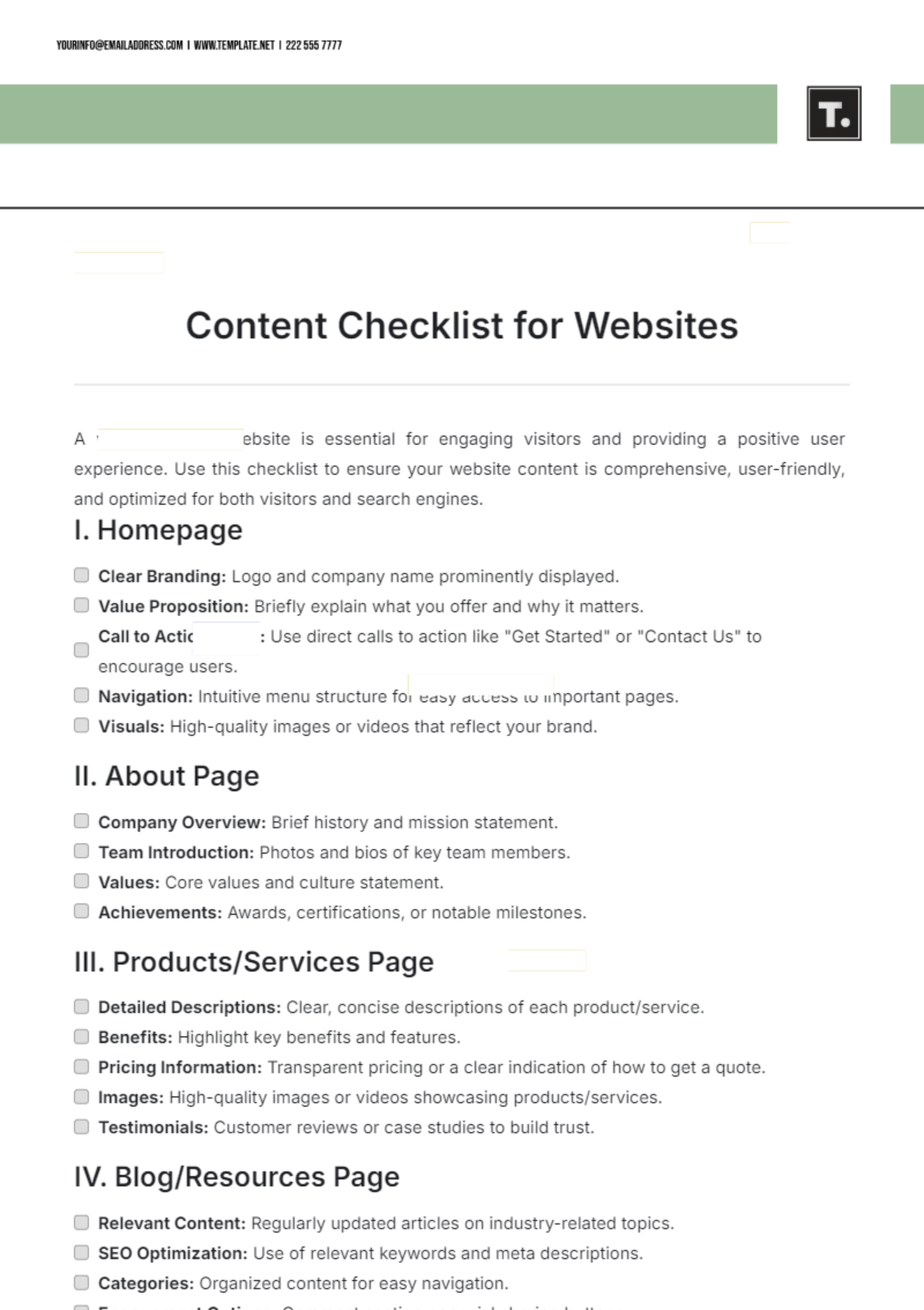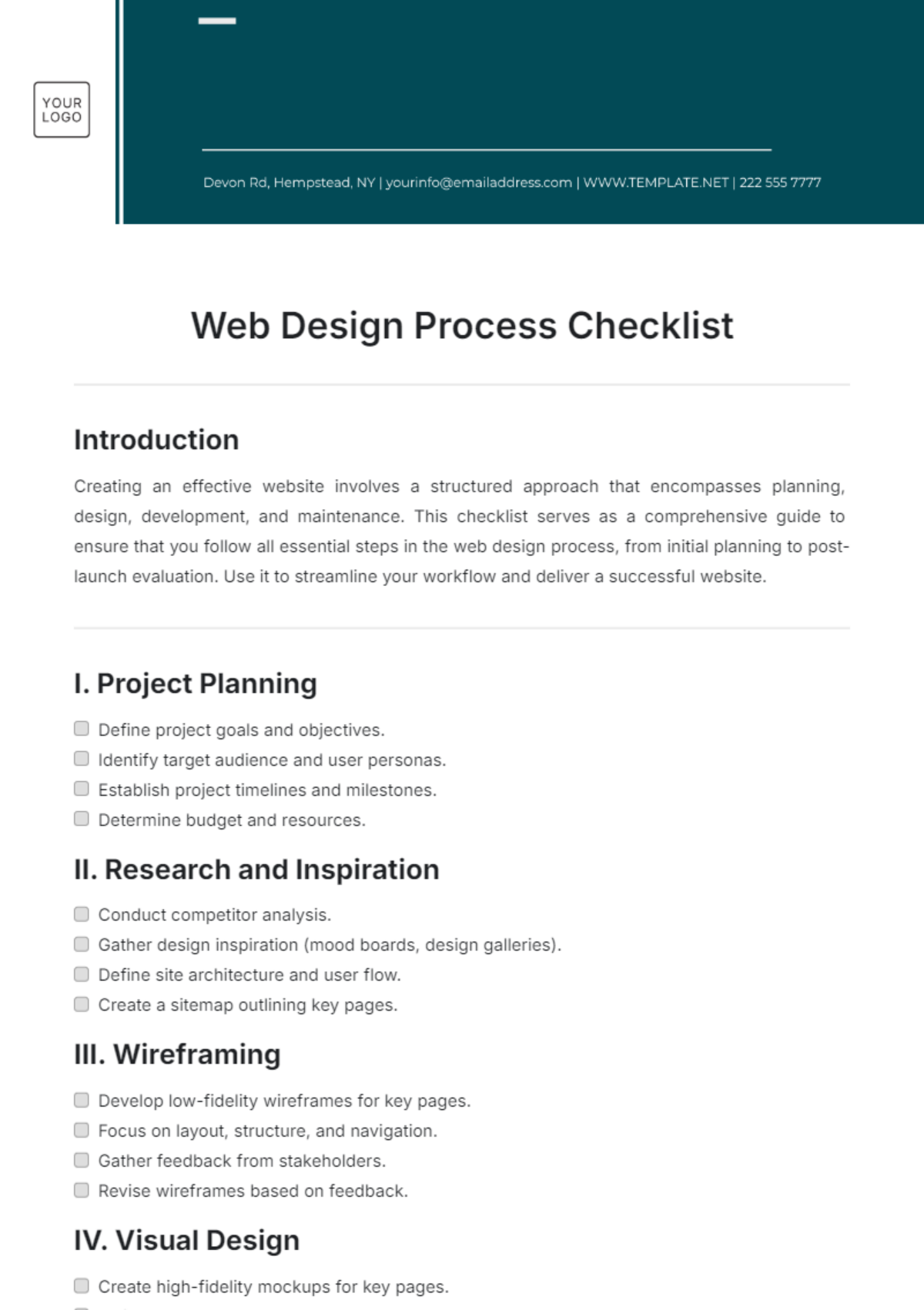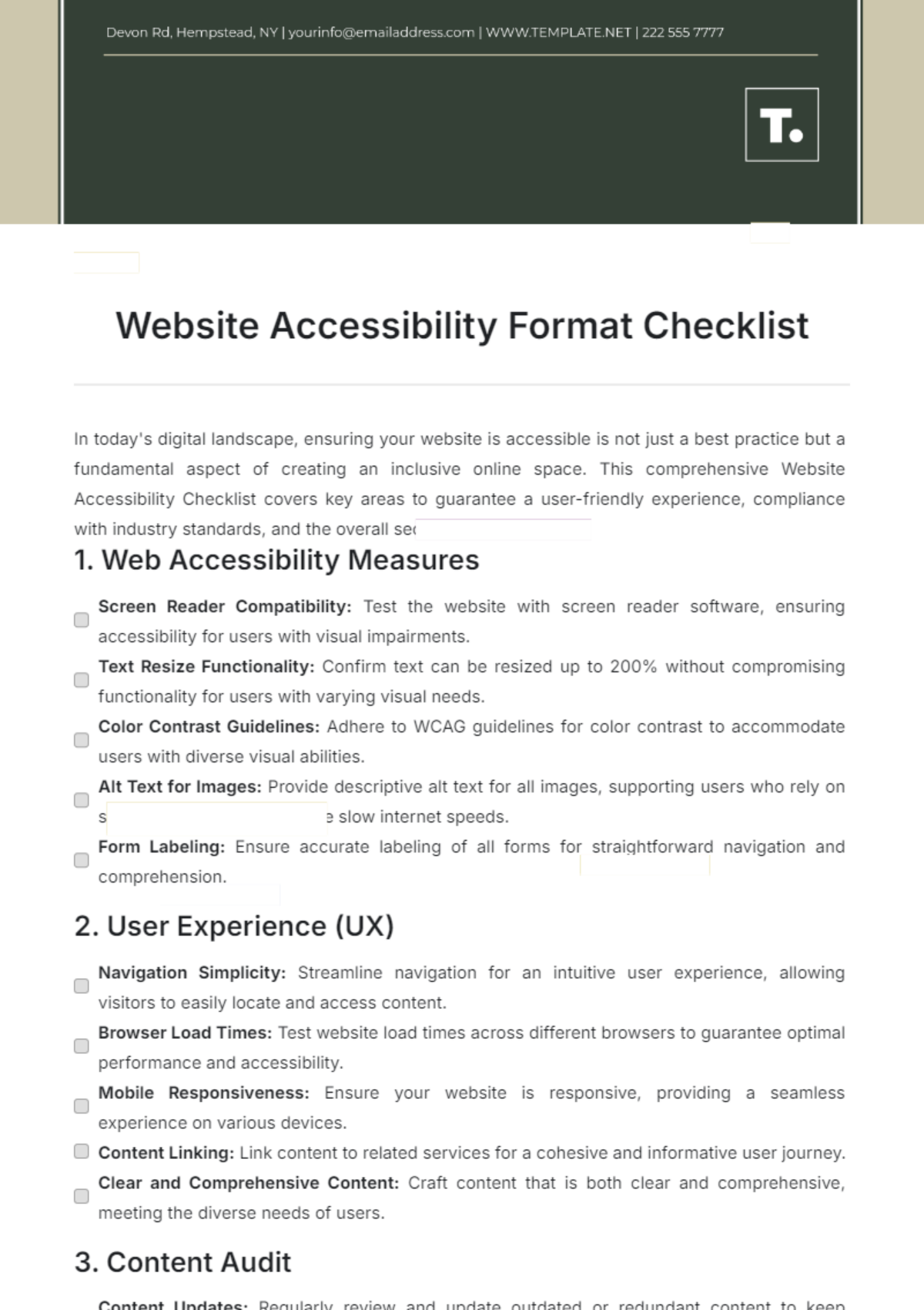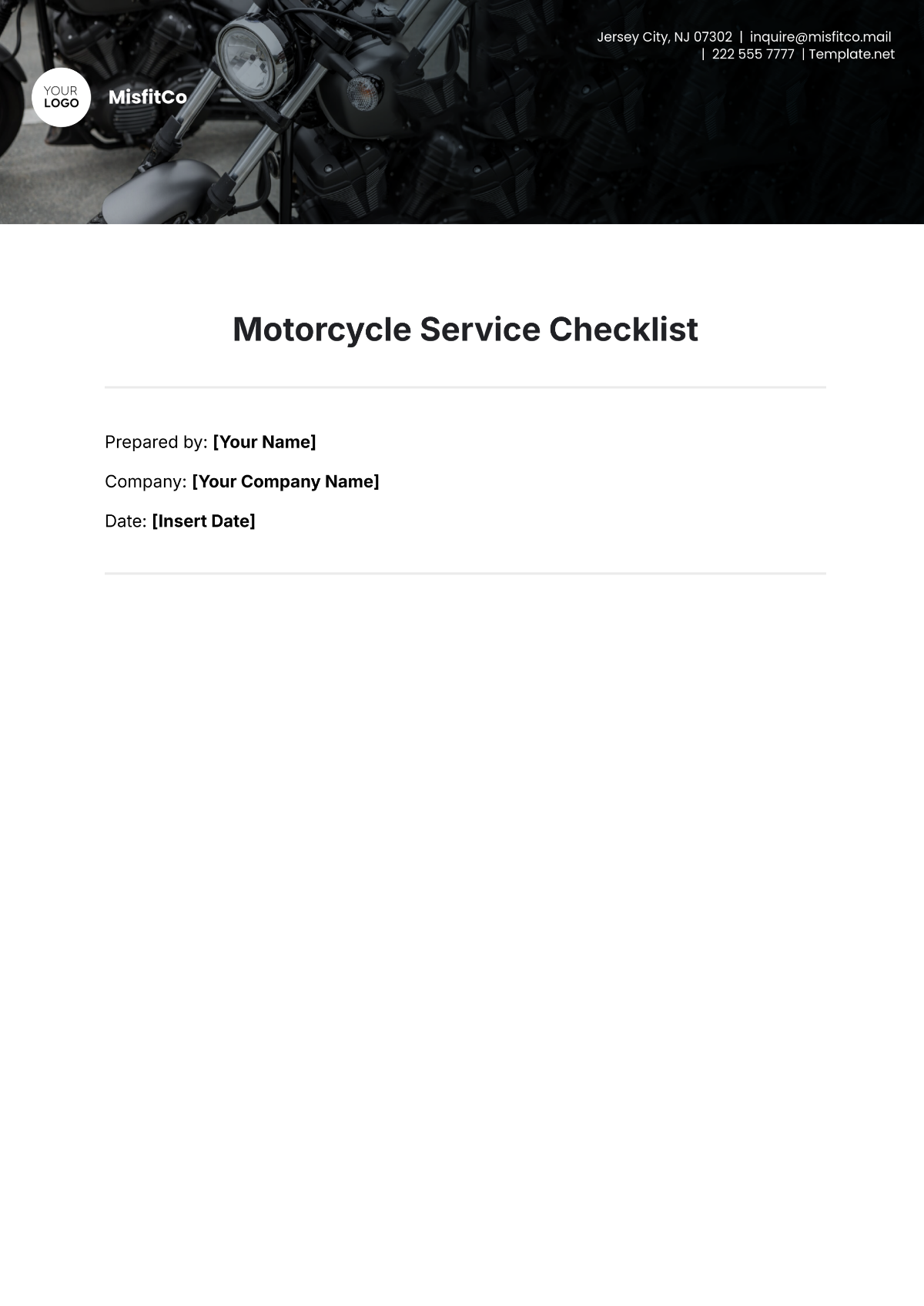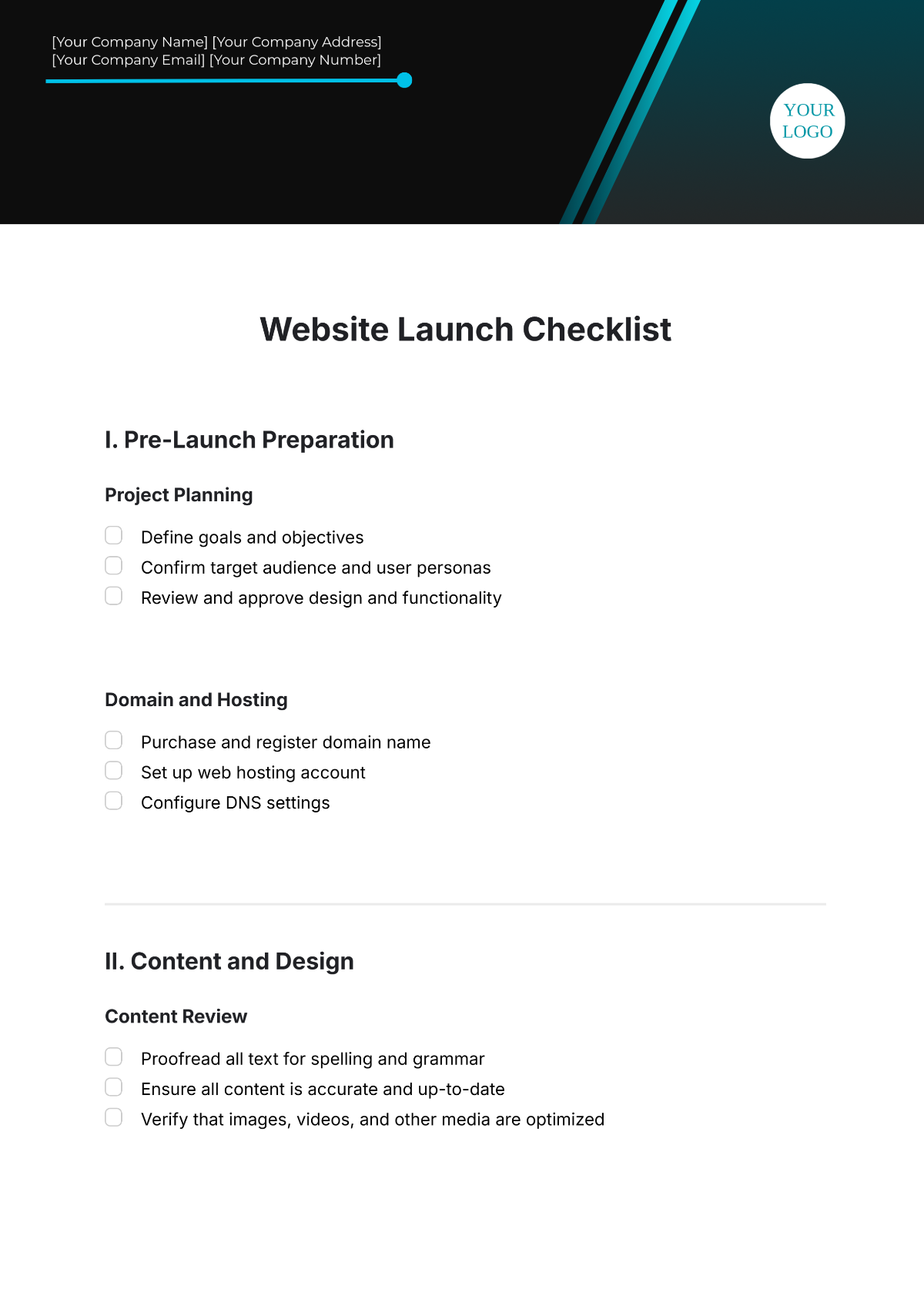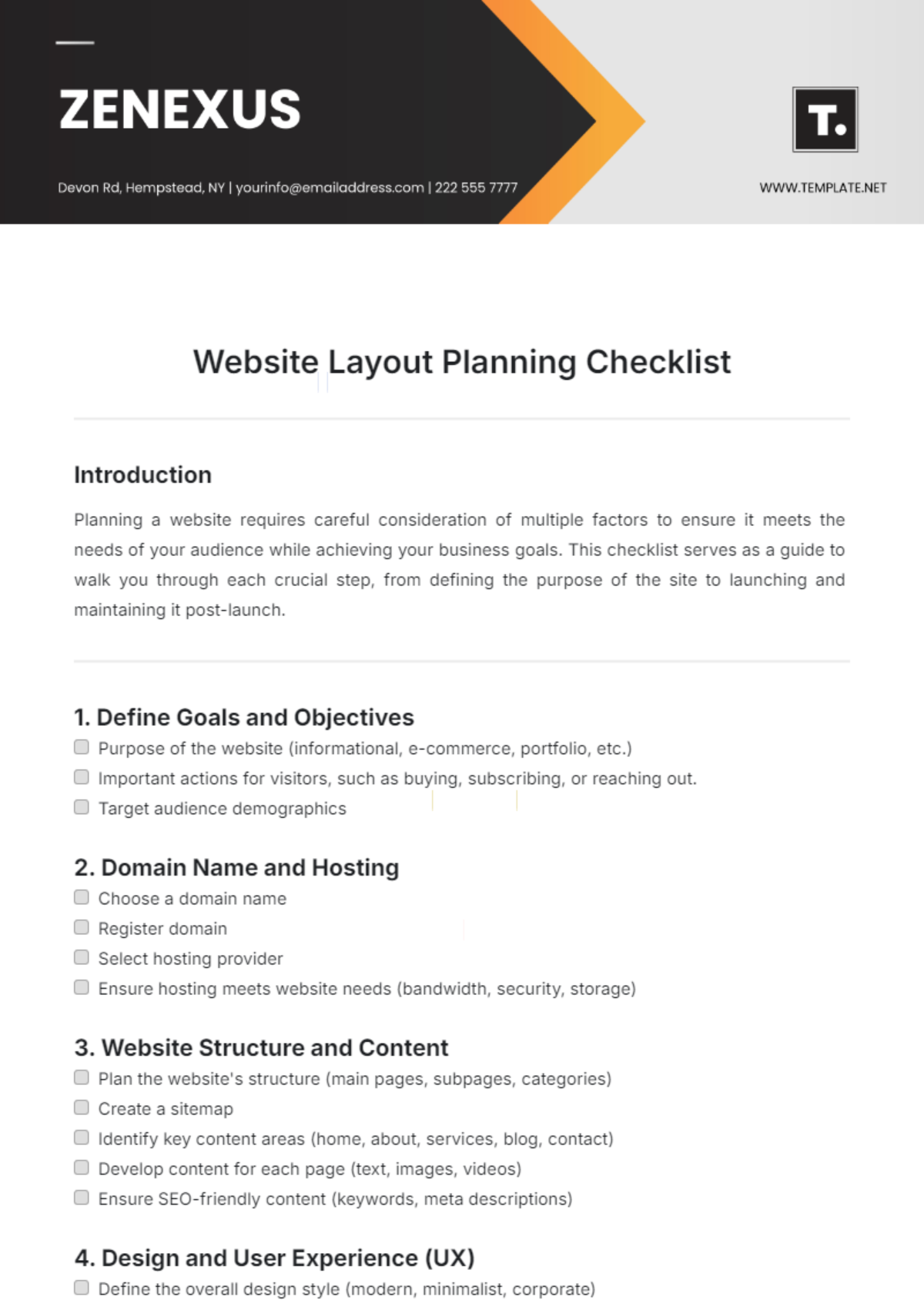Content Checklist for Websites
A well-structured website is essential for engaging visitors and providing a positive user experience. Use this checklist to ensure your website content is comprehensive, user-friendly, and optimized for both visitors and search engines.
I. Homepage
Clear Branding: Logo and company name prominently displayed.
Value Proposition: Briefly explain what you offer and why it matters.
Call to Action (CTA): Use direct calls to action like "Get Started" or "Contact Us" to encourage users.
Navigation: Intuitive menu structure for easy access to important pages.
Visuals: High-quality images or videos that reflect your brand.
II. About Page
Company Overview: Brief history and mission statement.
Team Introduction: Photos and bios of key team members.
Values: Core values and culture statement.
Achievements: Awards, certifications, or notable milestones.
III. Products/Services Page
Detailed Descriptions: Clear, concise descriptions of each product/service.
Benefits: Highlight key benefits and features.
Pricing Information: Transparent pricing or a clear indication of how to get a quote.
Images: High-quality images or videos showcasing products/services.
Testimonials: Customer reviews or case studies to build trust.
IV. Blog/Resources Page
Relevant Content: Regularly updated articles on industry-related topics.
SEO Optimization: Use of relevant keywords and meta descriptions.
Categories: Organized content for easy navigation.
Engagement Options: Comment section or social sharing buttons.
V. Contact Page
Contact Form: Easy-to-use form for inquiries.
Contact Information: Phone number, email address, and physical address.
Social Media Links: Icons linking to your social media profiles.
Map: Embedded Google Maps for location-based businesses.
VI. Legal Pages
Privacy Policy: Clear explanation of data collection and usage.
Terms of Service: Detailed terms regarding the use of your website.
Cookie Policy: Information on cookie usage, if applicable.
VII. User Experience (UX)
Responsive Design: Ensure the site is mobile-friendly.
Loading Speed: Optimize images and scripts to improve loading times.
Accessibility: Following accessibility guidelines (e.g., adding alt text to images).
Navigation: Simple, intuitive navigation with breadcrumbs.
VIII. SEO Elements
Keywords: Use relevant keywords naturally throughout the content.
Meta Tags: Unique title tags and meta descriptions for each page.
Internal Linking: Links to other relevant pages within your site.
Alt Text: Descriptive alt text for all images.
IX. Analytics and Tracking
Google Analytics: Implement for tracking user behavior.
Conversion Tracking: Set up goals to measure conversions.
Heatmaps: Tools used to visualize user interactions on the site.
X. Social Proof
Testimonials: Client testimonials or user reviews.
Case Studies: Detailed case studies showcasing successful projects.
Trust Badges: Certifications, awards, or security badges.
XI. Final Review
Spelling and Grammar: Proofread all content for errors.
Consistency: Ensure consistent tone, style, and branding throughout.
Updates: Schedule regular content reviews for relevance and accuracy.


